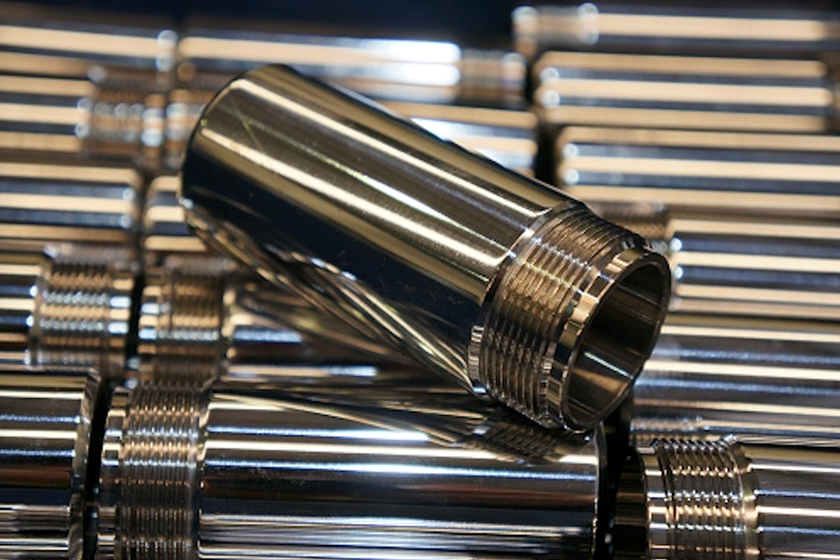Alkaline Drips
Question: We are an electrocoater in Canada and have defects that we cannot seem to find a solution for.
Question:
We are an electrocoater in Canada and have defects that we cannot seem to find a solution for. The picture below is typical of the defect that we are getting. Could you tell us what this is and what causes this defect? DL
Answer:
I thought I recognized this defect as soon as I saw the picture. I am assuming that you are using a cathodic epoxy electrocoat and have a multi-stage washer with one or more alkaline cleaning stages. You probably have a monorail conveyor, such as 458 Caterpillar chain.
Featured Content
When I was running a custom coating operation, we called these defects “alkaline drips." They are usually very sporadic and vary in size but are usually in the center of the rack of parts. They usually are oriented vertically and increase in size from top to bottom (like a teardrop).
They are the result of alkaline solution dripping from the chain onto the parts after the parts have moved beyond the acidic phosphate and rinse stages. Since the cathodic bath is acidic, the electrocoat “reacts” with the alkaline surface left by the drip. This results in a series of bumps and craters (as seen in your picture) in the coating.
This can be a very serious condition because while you see a few defects on parts the “alkaline drips” probably are also dripping into the electrocoat tank and will result in “clumps” of reacted electrocoat. These “clumps” can cause problems in filters, ultrafilter, or break up and look like dirt in the bath.
The source of the problem can be from several places, but is always from cleaner solution (and/or solution from a subsequent rinse) being carried on the chain through the acidic stages. One or more misaligned nozzles can cause the solution to be deposited on the chain. Large parts with flat top surfaces can result in solution splashing onto the chain. Missing or damaged splashguards around the conveyor in the alkaline stages can also be a source.
The correction of the problem is to eliminate the source of the alkaline solution on the chain by correcting the item(s) above. If that is not practical, then the solution will need to be rinsed off after the alkaline stages and/or after the acidic stages, but before the final rinse. Most washer manufactures include some type of conveyor chain rinse or blow-off mechanism. These are usually at the end of the washer and can actually be part of the cause for “alkaline drips." Adding one or more chain rinse stations before or after the phosphate stage is usually the best method for solving this type of defect and preventing other problems. You should also get your electrocoat, pretreatment and washer suppliers involved.
RELATED CONTENT
-
Measuring the Surface Area of Fasteners
How do you measure the surface area of a threaded fastener? How much coating would you put on it? How thick of a coating? What about non-threaded fasteners? The U.S. Department of Agriculture’s Forest Service, of all people, may have come up with the solution for those pondering how to coat sometimes-difficult small pieces using computer imaging and software to compute the area.
-
Troubleshooting for Electrocoating
Characterizing the type of defect is essential in identifying the root cause and eliminating its source...
-
Coatings Drive Electric Vehicles Further
Electric vehicle batteries depend on coatings to maintain optimal temperatures, reduce the risk of fire damage and electrical interference, and more.


















